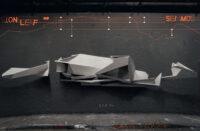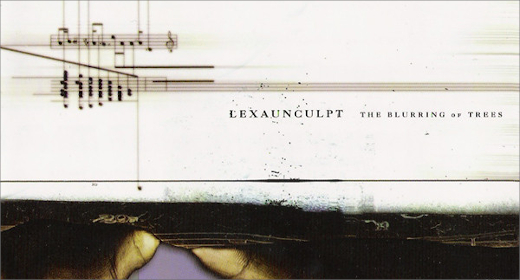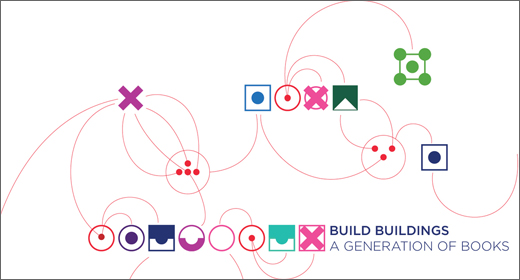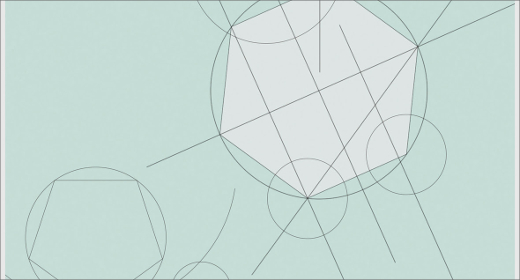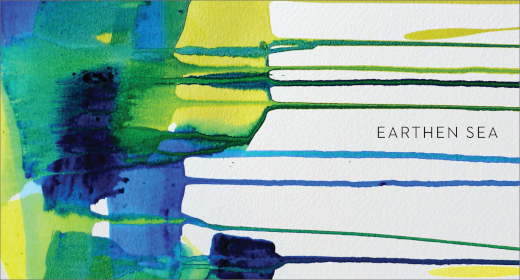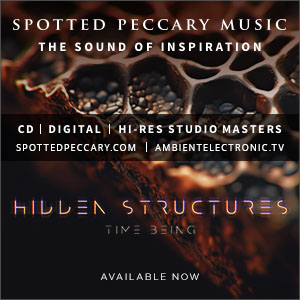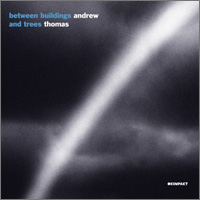
(August 2010) To see elements of Andrew Thomas’s day-job – production designer – behind the filmy sounds of his musicianly work might be facile; hard to resist, though, for his atmospheric, yet not immersive, suggestive, yet ambiguous, surfaces seem open – primed for linkage, as if placeholders of to-be-resolved emotion. Between Buildings and Trees (hereinafter BB&T) is not so much widescreen as home-cinema, with a sound palette leaning more toward the sussurant spectral side of the lush orchestral that people tend to associate with Kompakt’s Pop Ambient series. This fourth outing for the imprint finds him indulging a different methodology that’s a combination of personal archaeology and bricolage – a splice’n’dice of old cassette-bound and 4-track found sound fragments with intermediate and newer findings from his sound archives. It’s a style that may seem skinny and wan next too some of the more plumped-up and blowsy Pop Ambienteers, but it wears well over the longer haul of an (admittedly short) album.
Compared to debut, Fearsome Jewel, whose soundfield seemed brimming, saturated with over-rich orchestral colour, BB&T is a more reined in, at times even etiolated, affair, and all the more effective for it; its muted timbres, rarely in concert, hang like wisps of space dust revealed in dappled light. “A Dream of a Spider” is the keynote, lulling loops of piano and string rinsed in a crepitant solution of static, quavering drones and skittish rhythm a quietude edged with a certain disquiet, further articulated in a left-outside-in-the-rain minor-chord guitar coda. “Light On Sea (From Above the World So High)” is a veritable bath in pianoid ripple with a background synth shimmer. BB&T‘s surfaces are lightly littered with the traces of its patchwork composition process, at times with a hint of the glitch études of Deupree & Kirschner’s post_piano, though the G-spot is only lightly touched; these are subtly striated sounds, and more in line with the come-hither minimalism of a 12k than the destabilizing fissures of a hard-stare Raster Noton. “Blue Cassette” affords a dream drift in a neo-classical soundtrack sequence rendered woozy through warbly pitchshift; the piece fades to grey with a crepuscular synth-drone, shucking the fluffy navel gazing associated with Ambient’s New Age Tendency, skirting the hauntological, flirting with the effluvia of errant memory. “Moth in Mouth,” similarly dys-inclined, takes up a darkest blue sustained piano chord down before ditching it in a drowning pool of tape hiss and subliminal strings. “Hazer” and “Hazer 2” – perhaps the most beauteous – offer more unalloyed pleasures in a less troubled resting place. Sandwiched between, “Net To Catch A Ghost” is a Harold Budd emptied of romanticism – abandoned piano wanderings somehow stripped of warmth but suggestive of benumbed heart-hurt.
Along the way there are less sure steps: “One Thousand Pin Holes In A Black Paper Sky” is something of an Eno throwback; “Above The World So High” starts stuck in stumbles and dissonance, before gradually freeing itself to belatedly bask in the sunnier climes of its earlier prefiguration. And there are sections of BB&T on which Thomas could be a Cologne clone – cf. Markus Guentner and Ulf Lohmann, both of whom, incidentally, dropped from the Pop Ambient retinue, he seems to have outlasted. Overall, though, BB&T does speak with a distinctive voice, however low key, which is, perhaps, THE key: his take on ambient’s favoured gauzy-floaty-drifty template is imbued with a character and economy of expression that somehow sets apart this urban-pastoral late-period mood music whose slender means belie a fibrillating Brownian motion of substance that reveals itself on closer observation.
Between Buildings and Trees is out now on Kompakt. [Listen | Purchase]








